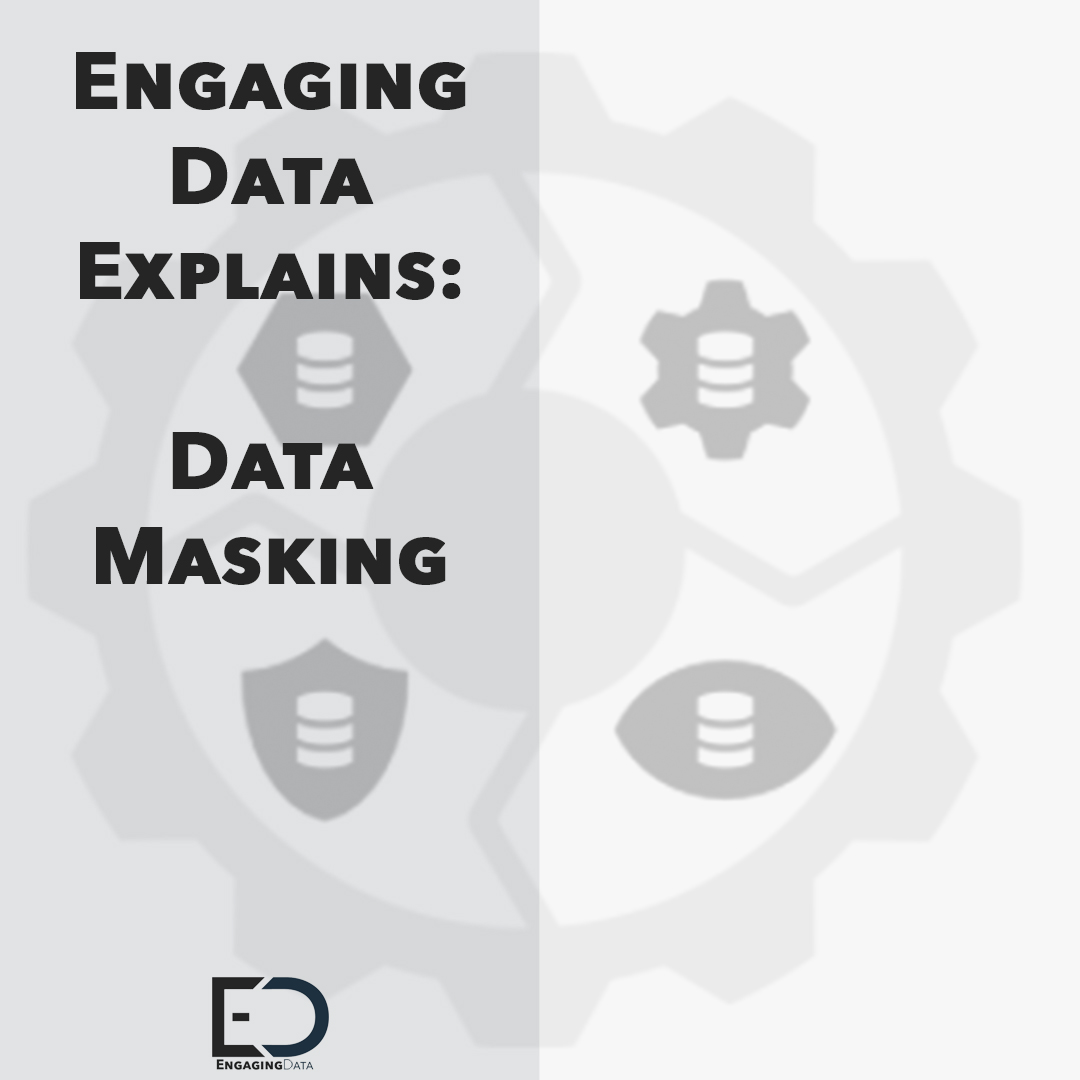
Data Masking
Engaging Data Explains:
Data Masking
The Data Masking Challenge
One of our clients had an interesting data masking requirement. How to mask Production data to meet with GDPR and IT security policies. The data needed to be human readable enabling the development and testing teams to create a data feed for a new Client Portal system. However, the core system did not have the ability to mask the data, only scramble or obfuscate. The core system was extremely complex, built & expanded on over 10 years. It is difficult to understand the system & how data is stored because documentation didn’t exist!
Furthermore, the architecture restraints meant there was not enough storage space to hold a second (in-line) database with masked production data.
Is This A Common Problem?
The more companies we speak to, the more complex or complicated situations we find. From our experience, we’ve found a pattern emerging in the common problems or requirements:
- Old Tech – Ageing trading platforms/core systems or sources of data often don’t have the functionality to masked data. Those that do or have extensions/plug in to mask the data often take a long time to process or do not have the flexibility to fit every scenario.
- Quick turnaround – Near realtime data is nice to have, but not always a real requirement.
- Specific/varied masking – Different types of masking needed, obfuscation, scrambled, encrypted or
human readable & randomised. - Storage – Limitations on storage or infrastructure makes it difficult to store an entire copy of production.
- Cost – Large database providers offer alternative tools with the same effect but also command a very large price tag.
- Time – Developers can develop hand-cranked specific solutions which take reasonable amounts of time to develop but much longer to test to ensure the solution is working as expected.
- Doing the right thing – Most clients want to do the right thing to meet regulatory requirements but see this as a complicated housekeeping chore and recognize the risk but choose to ignore it.
Engaging Data Discovery
We had a lot of options to solve this problem, but selected Redgate Data Masker and here is why:
- After a review of the underlying data structure, it was too difficult, costly & time intensive to try to transfer the data into the Test environment and apply masking rules.
- We discovered that it would take 32 to 48 hours to copy the “majority” of the data from Production to UAT environments. Doing this would copy most but not all of the data creating a potential for leaving things behind. Plus it would take more time to run the system’s own obfuscation processes (another 8 hours).
- Masking not Obscuring. Create human-readable values. i.e. Mr. Smith converts to Mr. Jones. This was not available from the trading platform’s masking function.
- Defined values. Create predictable values, such as a telephone number set format or date of birth.
- There was a lack of documentation regarding the location of personally identifiable data. This could result in the process missing part of the system if we processed the whole database.
- We had a requirement to build in a verification process, comparing the masked data against the source. This report would answer the question – “have we missed masking any records?”
We created a simple plan to extract the data, load into a SQL database and then mask. Only taking required data increased efficient use of storage and reduced processing time. This would allow the Client’s development team to export the masked data and transfer into the Client Portal.
Choosing The Right Tool
Identifying the data was a difficult manual process because of the
At the end of this exercise, WhereScape 3D produced detailed documents of the core systems data structure as well as analysis of the data cardinality/profiles. It uncovered some interesting points about the system, including some parts of the system that held personally identifiable data, that the client had not known existed.
Putting The Data Masking Solution Together
Using the information within the metadata; WhereScape’s Red imported the physical structure of the system and automating the extraction of data into a SQL database on a scheduled basis. We started off daily, but later to increase to every hour.
Now that the data was at rest in the SQL database, our consultant used Redgate’s Data Masker to convert the personally identifiable data to a data set, based on the agreed rules held within the metadata. Once the rules had been designed, WhereScape’s Red scheduler automated the masking so that it started as soon as the loading has completed.
Data processing, including masking and being loaded into the target database, took place within 4 hours (initially). Not too onerous and very timely compared to other options. More importan
Did The Data Masking Work?
Using WhereScape Red, the Engaging Data consultant was able to build a comparison process, that utilised the metadata (only using those field marked as containing personally identifiable data) and compare the values before and after the process.
The processed ends with an automatic email of the data masking comparison report. This report contains a summary of field error analysis as well as a number of field errors per record. The latter was used to fail the process & prevent the data from be transferred to the target database. Automating this, enabled the Client to feel confident that the process was working correctly.
In Conclusion
All sorts of tools can be used to mask data. We find the best of them will automate the process allowing you to decide how to mask, when to mask & how frequent to do it.
If you would like to learn more about this Redgate‘s Data Masker, WhereScape Red or how we can help with your data project, please feel free to contact office@engagingdata.co.uk
